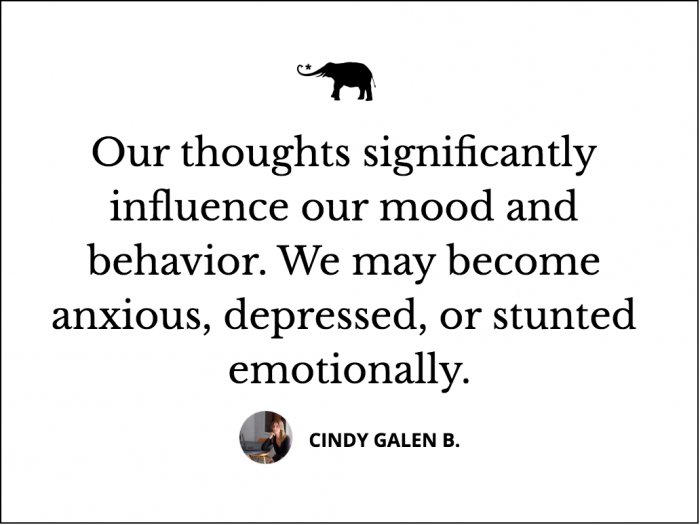View this post on Instagram
We linked our towels together to watch the sunrise.
The scent of coconuts radiated from our hot skin as we sat there laughing, covered in sand—the five of us. We were young and free like birds that summer.
From the ocean, I called out to admire the day’s perfection. But after the words left my mouth, I regretted saying them. And when everything went sideways in the bathroom of a McDonald’s, I was shaken, but I wasn’t surprised.
I saw my friend’s eyes roll backward and watched as her petite frame slid slowly down to the ground. I tried to catch her, but instead, we fell together onto the filthy, yellow-tiled floor. I rested her head on my lap and screamed when the color left her body.
“I jinxed us. I’m so sorry.” I cried. “I shouldn’t have said the day was perfect,” I repeated over and over, even as the emergency technicians assured me my words had no bearing.
They said her body went into shock from the heat and promised that she’d be fine. Yet, I was convinced I had caused this to happen, somehow.
By the age of 17, I had internalized a belief that insisted if something went wrong, it was my fault. I’d been collecting evidence to support this line of thinking since I was little.
Cognitive distortions, such as this, are our mind’s way of having us believe negative things about ourselves and our world, which aren’t necessarily the truth.
It’s the math test we thought we failed, yet received a perfect score. And it’s the audition we believed we bombed, despite landing the role in the show. Our minds can play tricks on us, as we all know.
Most people experience cognitive distortions from time to time. It is part of being human.
Some common types of cognitive distortions are: polarizing, catastrophizing, overgeneralizing, personalizing, blaming, jumping to conclusions, and magical thinking.
However, when we engage in these negative thinking styles too often, they can become a pattern and affect our mental health. Our thoughts significantly influence our mood and behavior. We may become anxious, depressed, or stunted emotionally.
Cognitive Behavioral Therapy (CBT) may be used to contradict and challenge our cognitive distortions. Therapy will help to shed the behaviors we have organized around these faulty belief systems.
And we may lean into our spiritual nature and the laws of the universe to heal our distorted thinking as well. We can apply the laws of attraction into our everyday lives as a means of creating space between our cognitive thoughts and our emotions.
In doing so, we are able to quiet our thinking minds and become situated in our essence.
Once I stepped back from my mind’s workings and aligned with the universe, I was able to discover the self-limiting beliefs I held that disrupted my thinking.
I spent my late teens and early 20s trying to prevent negative events or jinxes from taking place. Yet, I rarely acknowledged the good that transpired in my life while doing this. I didn’t feel entitled to my joy because I had to be vigilant and wary, and deep down, I didn’t feel deserving of happiness.
I’ve come to understand that those joyous sensations I deprived myself of feeling carried a vibration. All of our thoughts and emotions hold vibrational energy. Together, they compose our inner state, from which we create our reality.
“You attract and manifest whatever corresponds to your inner state.” ~ Eckhart Tolle.
I learned that the more I overlooked the sensations of happiness, the less of these sentiments I attracted into my life. Thus, if I wanted to experience more joy, then I had to allow myself to feel joyful—purely, wholeheartedly, and often.
Likewise, I learned if I wanted less unfortunate events to occur, then I couldn’t be consumed by the possibility of them.
This is true for all negative thinking patterns, negative self-talk, and self-limiting beliefs. The more power we give to those thoughts, the more likely their vibrations will resonate with us.
We can allow the universal law of “like attracts like” to help deter our negative thought processes.
Whether our distorted thinking is rooted in our fears or our unworthiness, when we apply the laws of attraction, we can question our thinking, transform our beliefs, and actualize our true desires.
Here are three important concepts to keep in mind when beginning to use the laws of attraction:
Focus on the sentiments, not the outcome. I used to believe manifesting meant achieving a goal, like my dream home or the perfect job. But manifesting is solely about the process of creating—not the creation itself. It is the sensations we have and the vibrations they carry that are our emphasis.
The law of attraction teaches us to live passionately, birth and rebirth our creations, and let go of our attachment to the end result.
Be neutral. In the beginning, it may be difficult to embody the opposite thought or vibration than the one we’ve been carrying for a while.
If we have engaged in a thinking pattern that has suggested we always fail, then it is hard to instantly feel capable of immense success. Initially, we can hold a neutral sentiment, neither having feelings of success nor failure, whenever we become triggered into this thinking pattern.
This allows a neutral energy to flow into our space, rather than the long-held negative vibration. It offers a respite from the self-limiting belief system we held. We can now pause and question the thoughts that have held us captive here. After some time, the neutral sensation can be replaced with a positive, higher vibration.
Don’t hold two opposing thoughts at the same time. When we tap into our deepest desires, we mustn’t hold onto thoughts doubting their likelihood at the same time.
If it is my desire to be in love, then I must believe I am worthy of having love in my life. I need to place all of my attention on how being in love may feel and let those feelings expand.
If I doubt love will or could happen for me, then I am carrying an opposing or lower vibration, simultaneously. This will cancel out the higher vibration.
~









Read 16 comments and reply